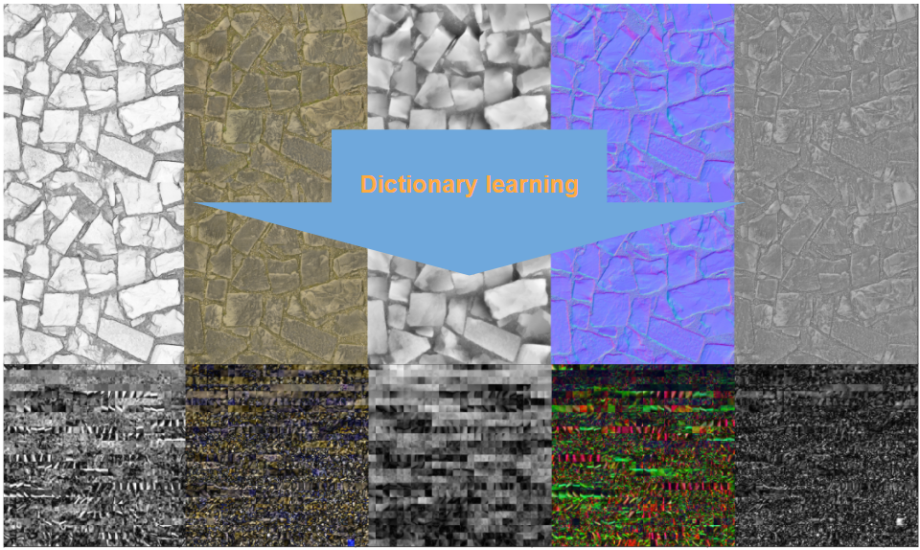
Bart Wronski, a specialist in graphics, machine learning, image and signal processing, shared a new post on compressing whole PBR texture sets together based on the strong correlation of those textures.
You can start studying the topic by reading the developer's previous post on decorrelating some of the channels using PCA/SVDs, an idea that is crucial to almost all compression algorithms. He studied dimensions in a decorrelated space with a small amount of information that can be dropped completely, stored at a lower resolution, or quantized.
The latest post is dedicated to redundancy across both the stored dimensions, plus the image space using sparse methods and kSVD algorithm. "From my personal motivation, I wanted to learn more about those sparse methods, play with implementing them and build some intuition," wrote the author.
Wronski presented a simplified and intuitive explanation of “sparsity” and “overcompletness” and showed how to use their redundancy as an advantage. Also, he discussed how you can use sparse approximation methods for tasks like denoising, super-resolution, and texture compression. The post contains an explanation of k-SVD algorithm and discusses the task of compressing PBR material texture sets.
You can find the post here. The author also included some useful links that will let you further explore the topic.
